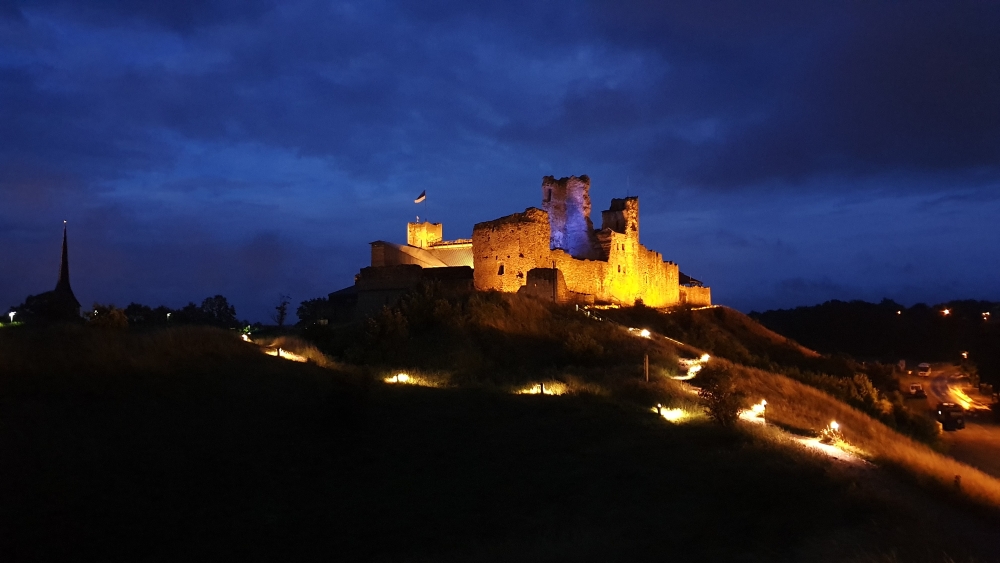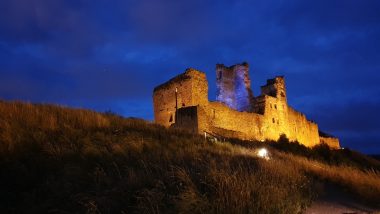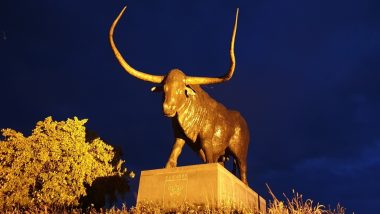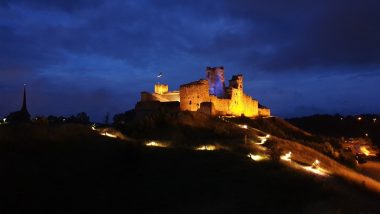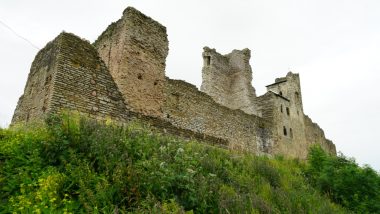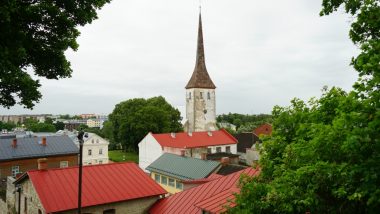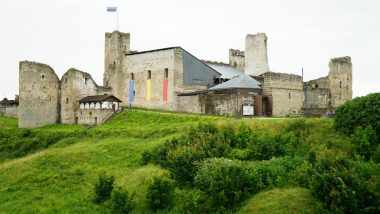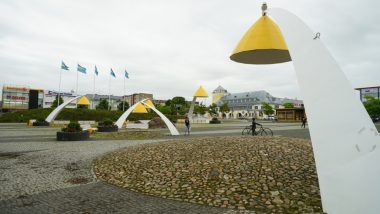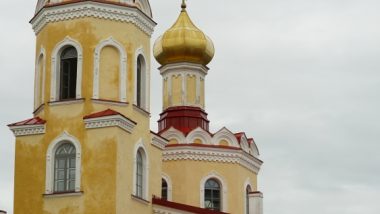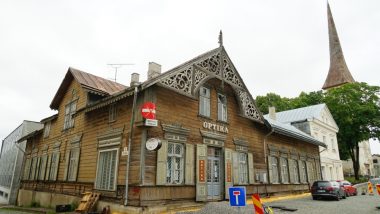We pulled into Rakvere on a rainy afternoon and were drawn to the imposing castle ruins perched above the town. Throughout the ages, Rakvere Castle has belonged to Danish kings, knight-monks of the Livonian Order, and the Swedish and Polish states. During the Polish-Swedish War of 1600-1629, the castle was partly blown up by the Polish in 1605, and later by the Swedes. The castle has lain in ruins since the 17th century. Just outside the castle, the Rakvere Aurochs looks ready to charge off a hill – this massive 7 tone, 3,5 meters high, and 7,1 meters long statue was completed to commemorate the town’s 700th anniversary in 2002. You might be forgiven for thinking that’s a lot of bull, but actually, it’s an aurochs – a large, long-horned wild ox that became extinct in the 17th century. A large square forms the centerpiece of the town, much of which was built during Estonia’s thriving period of independence between the two world wars. A modern art installation dominates the square, its bright yellow showerheads incongruous with the quaint architecture.
Rakvere – parking location: 58.3818590N 26.7243580E


